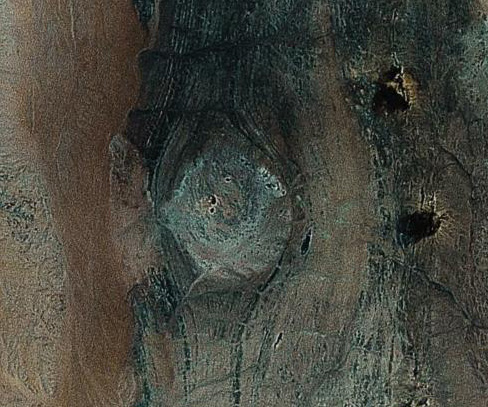I was rather taken aback – in a good way – by the large number of responses to last week’s crater conundrum. Most people seemed to conclude that this structure in southeast Algeria:

was not, in fact, an asteroid crater. This was my feeling too, although I should stress that you shouldn’t regard that as an ‘answer’: it’s just my opinion, and is not based on anything other than my interpretation of the image above.
I think that it is reasonable, at first glance, to consider the possibility of this structure being impact generated. It is the correct size and shape, and a quick scan of the surrounding area indicates that it is unique in this particular region. However, the nature of the deformation in the surrounding bedrock doesn’t seem quite right to me. The beds at the north and south ends look more like they are flowing around the central structure, whereas a meteorite impact should have caused these beds to have been tilted back on themselves. For the same reason, despite some obvious volcanoes in the surrounding area, I don’t think that it’s a caldera structure resulting from a large explosive eruption.
By elimination, then, it seems likely that tectonic forces are responsible for this structure. My first thought was some sort of dome structure, where two episodes of folding at right angles to each other have pinched out part of the unit underlying the hard grey formation. This requires that we are looking at an area quite close to a geological boundary, so whether this explanation holds up or not depends greatly on the nature of rocks outcropping to the west of the ‘Eye’, which is lighter in colour but may just be due to more sand covering the underlying geology than any real change in rock type.
Kim has another plausible suggestion:
I think we’re looking at structures that formed in the mid crust. I think the “eye” is a pluton (for non-geologists: molten rock that cooled underground), and the dark lines are the pattern of foliation around it. I think the pluton is probably older than the deformation, but that kind of pattern has also been described from syn-deformational plutons.
Deformation around a pre-existing, harder, intrusion, is possibly more consistent with the outcrop pattern we see in the satellite image. But, as is often the case, the only way to be really sure is to go and have a closer look. Anyone willing to fund a geoblogging field trip?



Comments (8)